 Sigiriya (Lion's rock) is an ancient rock fortress and palace ruin situated in the central Matale District of Sri Lanka, surrounded by the remains of an extensive network of gardens, reservoirs, and other structures. A popular tourist destination, Sigiriya is also renowned for its ancient paintings (frescos), which are reminiscent of the Ajanta Caves of India. The Sigiriya was built during the reign of King Kassapa I (AD 477 – 495), and it is one of the seven World Heritage Sites of Sri Lanka.
Sigiriya (Lion's rock) is an ancient rock fortress and palace ruin situated in the central Matale District of Sri Lanka, surrounded by the remains of an extensive network of gardens, reservoirs, and other structures. A popular tourist destination, Sigiriya is also renowned for its ancient paintings (frescos), which are reminiscent of the Ajanta Caves of India. The Sigiriya was built during the reign of King Kassapa I (AD 477 – 495), and it is one of the seven World Heritage Sites of Sri Lanka. Sigiriya may have been inhabited through prehistoric times. It was used as a rock-shelter mountain monastery from about the 5th century BC, with caves prepared and donated by devotees to the Buddhist Sangha. According to the chronicles as Mahavamsa the entire complex was built by King Kasyapa, and after the king's death, it was used as a Buddhist monastery until 14th century.
Sigiriya may have been inhabited through prehistoric times. It was used as a rock-shelter mountain monastery from about the 5th century BC, with caves prepared and donated by devotees to the Buddhist Sangha. According to the chronicles as Mahavamsa the entire complex was built by King Kasyapa, and after the king's death, it was used as a Buddhist monastery until 14th century.The Sigiri inscriptions were deciphered by the archaeologist Senarath Paranavithana in his renowned two-volume work, published by Cambridge, Sigiri Graffiti and also Story of Sigiriya.
Sigiriya is located in Matale District in the Central Province of Sri Lanka. It is within the cultural triangle, which includes five of the seven world heritage sites in Sri Lanka.
The Sigiriya rock is a hardened magma plug from an extinct and long-eroded volcano. It stands high above the surrounding plain, visible for miles in all directions. The rock rests on a steep mound that rises abruptly from the flat plain surrounding it. The rock itself rises 370 m (1,214 ft) above sea level and is sheer on all sides, in many places overhanging the base. It is elliptical in plan and has a flat top that slopes gradually along the long axis of the ellipse
History
 In 477 CE, prince Kasyapa seized the throne from King Dhatusena, following a coup assisted by migara, the king’s nephew and army commander. Kasyapa, the king’s son by a non-royal consort, usurped the rightful heir, Moggallana, who fled to South India. Fearing an attack from Moggallana, Kasyapa moved the capital and his residence from the traditional capital of Anuradhapura to the more secure Sigiriya. During King Kasyapa’s reign (477 to 495), Sigiriya was developed into a complex city and fortress. Most of the elaborate constructions on the rock summit and around it, including defensive structures, palaces and gardens, date back to this period.
In 477 CE, prince Kasyapa seized the throne from King Dhatusena, following a coup assisted by migara, the king’s nephew and army commander. Kasyapa, the king’s son by a non-royal consort, usurped the rightful heir, Moggallana, who fled to South India. Fearing an attack from Moggallana, Kasyapa moved the capital and his residence from the traditional capital of Anuradhapura to the more secure Sigiriya. During King Kasyapa’s reign (477 to 495), Sigiriya was developed into a complex city and fortress. Most of the elaborate constructions on the rock summit and around it, including defensive structures, palaces and gardens, date back to this period.Kasyapa was defeated in 495 by Moggallana, who moved the capital again to Anuradhapura. Sigiriya was then turned back into a Buddhist monastery, which lasted until the thirteenth or fourteenth century. After this period, no records are found on Sigirya until the sixteenth and seventeenth centuries, when it was used as an outpost of the Kingdom of Kandy. When the kingdom ended, it was abandoned again.
 Alternative stories have the primary builder of Sigiriya as King Dhatusena, with Kasyapa finishing the work in honour of his father. Still other stories have Kasyapa as a playboy king, with Sigiriya a pleasure palace. Even Kasyapa's eventual fate is mutable. In some versions he is assassinated by poison administered by a concubine. In others he cuts his own throat when isolated in his final battle. Still further interpretations have the site as the work of a Buddhist community, with no military function at all. This site may have been important in the competition between the Mahayana and Theravada Buddhist traditions in ancient Sri Lanka.
Alternative stories have the primary builder of Sigiriya as King Dhatusena, with Kasyapa finishing the work in honour of his father. Still other stories have Kasyapa as a playboy king, with Sigiriya a pleasure palace. Even Kasyapa's eventual fate is mutable. In some versions he is assassinated by poison administered by a concubine. In others he cuts his own throat when isolated in his final battle. Still further interpretations have the site as the work of a Buddhist community, with no military function at all. This site may have been important in the competition between the Mahayana and Theravada Buddhist traditions in ancient Sri Lanka.The earliest evidence of human habitation at Sigiriya was found from the Aligala rock shelter to the east of Sigiriya rock, indicating that the area was occupied nearly five thousand years ago during the mesolithic period.
Buddhist monastic settlements were established in the western and northern slopes of the boulder-strewn hills surrounding the Sigiriya rock, during the third century B.C. Several rock shelters or caves had been created during this period. These shelters were made under large boulders, with carved drip ledges around the cave mouths. Rock inscriptions are carved near the drip ledges on many of the shelters, recording the donation of the shelters to the Buddhist monastic order as residences. These have been made within the period between the third century B.C and the first century CE.
In 1831 Major Jonathan Forbes of the 78th Highlanders of the British army while returning on horseback from a trip to Pollonnuruwa came across the “bush covered summit of Sigiriya". Sigiriya came to the attention of antiquarians and, later, archaeologists. Archaeological work at Sigiriya began on a small scale in the 1890s. H.C.P Bell was the first archaeologist to conduct extensive research on Sigiriya. The Cultural Triangle Project, launched by the Government of Sri Lanka, focused its attention on Sigiriya in 1982. Archaeological work began on the entire city for the first time under this project.
 Sigiriya consists of an ancient castle built by King Kasyapa during the 5th century AD. The Sigiriya site has the remains of an upper palace sited on the flat top of the rock, a mid-level terrace that includes the Lion Gate and the mirror wall with its frescoes, the lower palace that clings to the slopes below the rock, and the moats, walls and gardens that extend for some hundreds of metres out from the base of the rock.
Sigiriya consists of an ancient castle built by King Kasyapa during the 5th century AD. The Sigiriya site has the remains of an upper palace sited on the flat top of the rock, a mid-level terrace that includes the Lion Gate and the mirror wall with its frescoes, the lower palace that clings to the slopes below the rock, and the moats, walls and gardens that extend for some hundreds of metres out from the base of the rock.The site is both a palace and fortress. Despite its age, the splendour of the palace still furnishes a stunning insight into the ingenuity and creativity of its builders. The upper palace on the top of the rock includes cisterns cut into the rock that still retain water. The moats and walls that surround the lower palace are still exquisitely beautiful.
 Sigiriya is considered one of the most important urban planning sites of the first millennium, and the site plan is considered very elaborate and imaginative. The plan combined concepts of symmetry and asymmetry to intentionally interlock the man-made geometrical and natural forms of the surroundings. On the west side of the rock lies a park for the royals, laid out on a symmetrical plan; the park contains water retaining structures, including sophisticated surface/subsurface hydraulic systems, some of which are working even today. The south contains a man-made reservoir, these were extensively used from previous capital of the dry zone of Sri Lanka. Five gates were placed at entrances. The more elaborate western gate is thought to be reserved for the royals.
Sigiriya is considered one of the most important urban planning sites of the first millennium, and the site plan is considered very elaborate and imaginative. The plan combined concepts of symmetry and asymmetry to intentionally interlock the man-made geometrical and natural forms of the surroundings. On the west side of the rock lies a park for the royals, laid out on a symmetrical plan; the park contains water retaining structures, including sophisticated surface/subsurface hydraulic systems, some of which are working even today. The south contains a man-made reservoir, these were extensively used from previous capital of the dry zone of Sri Lanka. Five gates were placed at entrances. The more elaborate western gate is thought to be reserved for the royals.The gardens
The Gardens of the Sigiriya city are one of the most important aspects of the site as it is among the oldest landscaped gardens in the world. The gardens are divided into three distinct but linked forms; water gardens, Cave and boulder gardens, and terraced gardens.
The water gardens can be seen in the central section of the western precinct. Three principal gardens are found here. The first garden consists of an island surrounded by water. It is connected to the main precinct using four causeways, with gateways placed at the head of each causeway. This garden is built according to an ancient garden form known as char bhag, and is one of the oldest surviving models of this forms.
 The second contains two long, deep pools set on either side of the path. Two shallow, serpentine streams lead to these pools. Fountains made of circular limestone plates are placed here. Underground water conduits supply water to these fountains which are still functional, especially during the rainy season. Two large islands are located on either side of the second water garden. Summer palaces are built on the flattened surfaces of these islands. Two more islands are located further to the north and the south. These islands are built in a similar manner to the Island in the first water garden.
The second contains two long, deep pools set on either side of the path. Two shallow, serpentine streams lead to these pools. Fountains made of circular limestone plates are placed here. Underground water conduits supply water to these fountains which are still functional, especially during the rainy season. Two large islands are located on either side of the second water garden. Summer palaces are built on the flattened surfaces of these islands. Two more islands are located further to the north and the south. These islands are built in a similar manner to the Island in the first water garden.The third garden is situated on a higher level than the other two. It contains a large, octagonal pool with a raised podium on its northeast corner. The large brick and stone wall of the citadel is on the eastern edge of this garden.
 The water gardens are built symmetrically on an east-west axis. They are connected with the outer moat on the west and the large artificial lake to the south of the Sigiriya rock. All the pools are also interlinked using an underground conduit network fed by the lake, and connected to the moats. A miniature water garden is located to the west of the first water garden, consisting several small pools and water courses. This recently discovered smaller garden appears to have been built after the Kasyapan period, possibly between the tenth and thirteenth centuries.
The water gardens are built symmetrically on an east-west axis. They are connected with the outer moat on the west and the large artificial lake to the south of the Sigiriya rock. All the pools are also interlinked using an underground conduit network fed by the lake, and connected to the moats. A miniature water garden is located to the west of the first water garden, consisting several small pools and water courses. This recently discovered smaller garden appears to have been built after the Kasyapan period, possibly between the tenth and thirteenth centuries.The boulder garden consists several large boulders linked with winding pathways. The boulder gardens extend from the northern slopes to the southern slopes of the hills at the foot of Sigiriya rock. Most of these boulders had a building or pavilion upon them. There are cuttings on these boulders that were used as footings for brick walls and beams.
 The audience hall of the king was situated in the boulder garden, the remains of which are seen on the flattened and polished summit of a large boulder. There is also a five metre long granite throne in this hall. The throne is carved from the boulder itself, and is not separated from it. Another notable feature in the boulder garden is the Cistern rock, named after a large, carved cistern on top of the rock. A large archway, created by two boulders, provides access to the terraced gardens.
The audience hall of the king was situated in the boulder garden, the remains of which are seen on the flattened and polished summit of a large boulder. There is also a five metre long granite throne in this hall. The throne is carved from the boulder itself, and is not separated from it. Another notable feature in the boulder garden is the Cistern rock, named after a large, carved cistern on top of the rock. A large archway, created by two boulders, provides access to the terraced gardens.The terraced gardens are formed from the natural hill at the base of the Sigiriya rock. A series of terraces, each rising above the other, connect the pathways of the boulder garden to the staircases on the rock. These have been created by the construction of brick walls, and are located in a roughly concentric plan around the rock. The path through the terraced gardens is formed by a limestone staircase. From this staircase, there is a covered path on the side of the rock, leading to the uppermost terrace where the lion staircase is situated.
Source: http://en.wikipedia.org/wiki/Sigiriya
Images: http://commons.wikimedia.org/wiki/Sigiriya
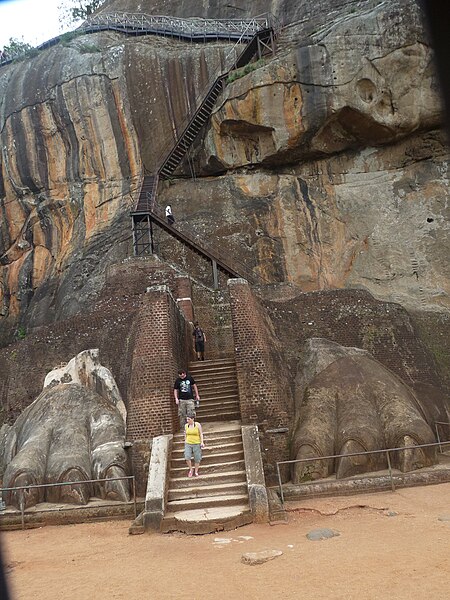



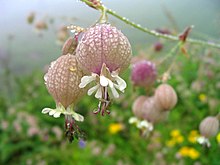

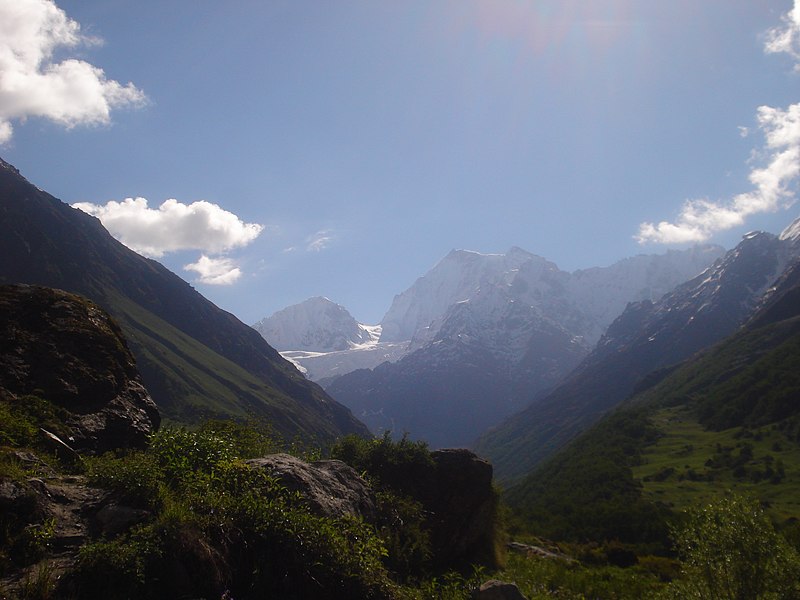






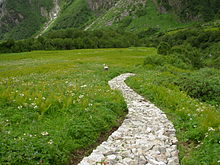

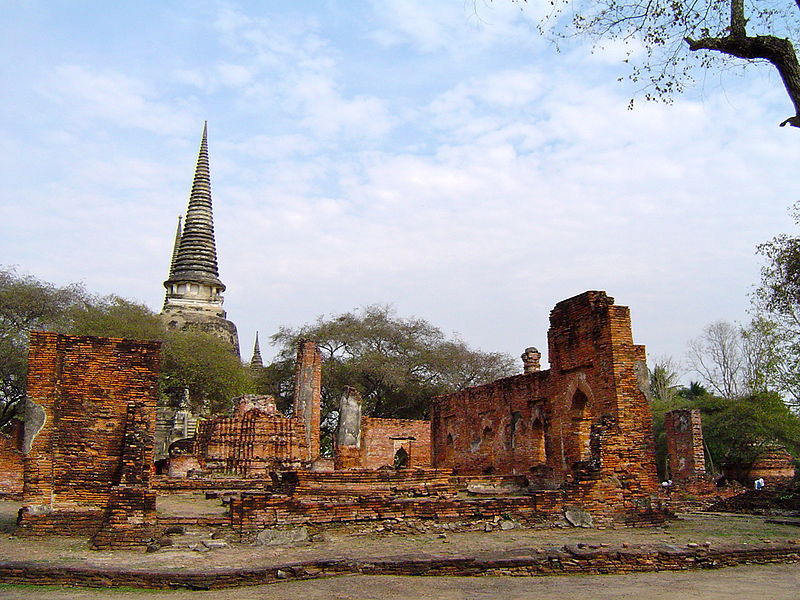
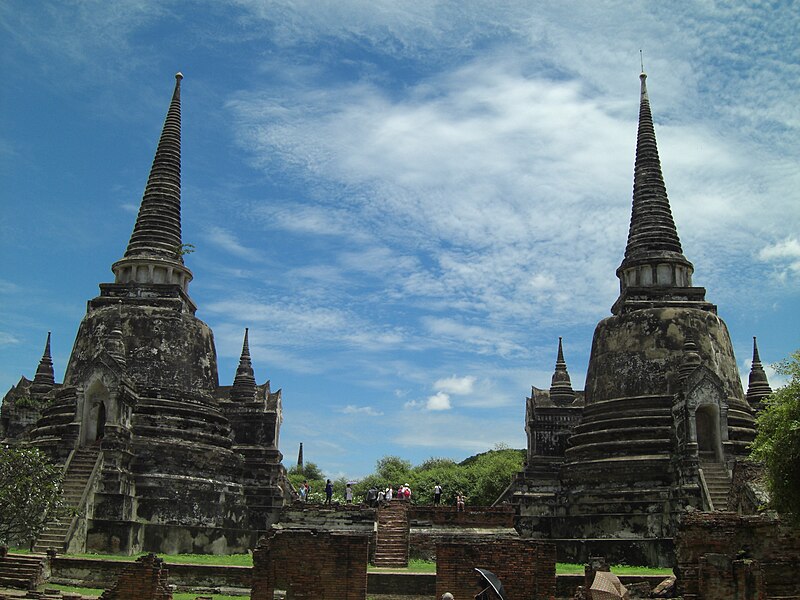




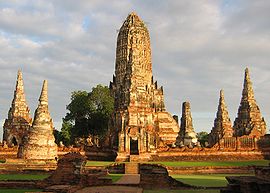
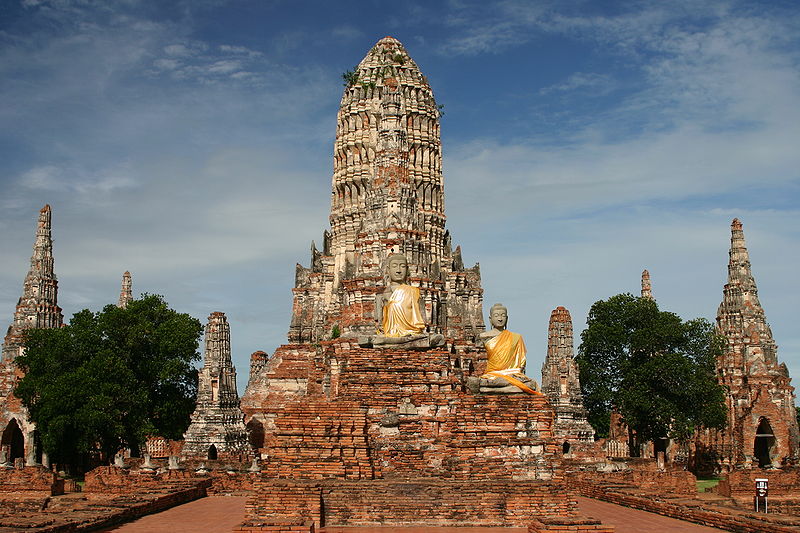






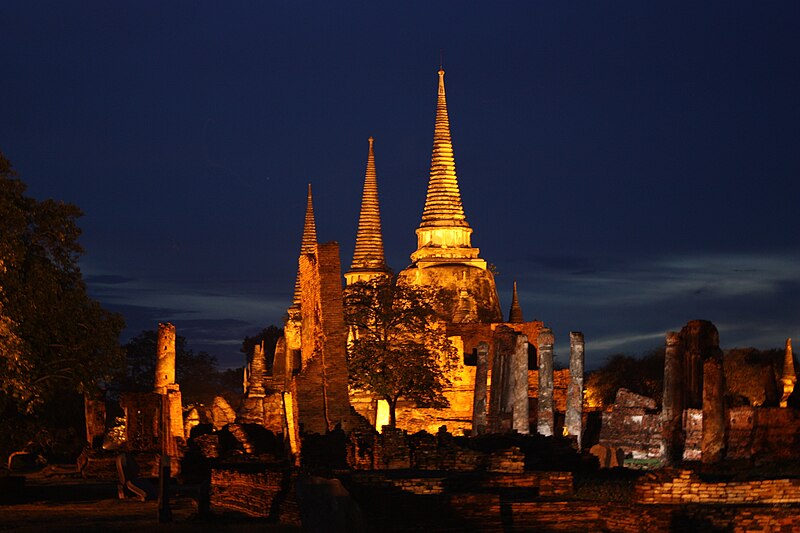




.jpg/800px-Wat_Mahathat_(Ayutthaya).jpg)
03.JPG/800px-Wat_Mahathat_(Ayutthaya)03.JPG)
02.JPG/450px-Wat_Mahathat_(Ayutthaya)02.JPG)









